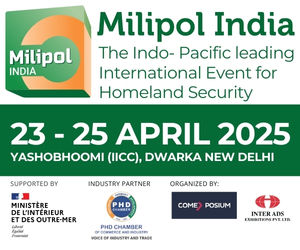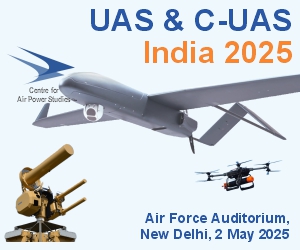
The third “2+2” or combined dialogue of the Indian and Australian foreign and defence secretaries was held in New Delhi on 9 December. Foreign secretary Vijay Gokhale and defence secretary Ajay Kumar led the Indian side, while the Australian delegation was led by their counterparts Frances Adamson and Greg Moriarty.
Both countries agreed to further enhance defence and security cooperation to ensure peace and prosperity in the Indo-Pacific and sought to prepare the ground for Australian prime minister Scott Morrison’s visit to India in January 2020.
Both sides came close to concluding negotiations on an agreement for reciprocal access to military facilities for logistics support that was expected to be signed during Scott Morrison’s visit.
With joint exercises and defence cooperation between India and Australia on the upswing, the Mutual Logistics Support Agreement (MLSA) – a bilateral pact to facilitate military of each country reciprocal access to food, water, fuel, spare parts and other components – will remove the need for protracted negotiations for reciprocal access to logistics support every time a manoeuvre is held. India currently has Logistics Exchange Memorandum Agreement with the United States and is also negotiating Acquisition and Cross Service Agreement with Japan.
One of the biggest developments in the security dialogue between India and Australia was New Delhi’s assumption of a larger role in the Indo-Pacific. It will boost cooperation between the two sides in security, defence, counter-terrorism and trade.
“The two sides welcomed the recent progress made in deepening bilateral, political, economic, security and defence cooperation. They discussed recent regional and global developments. They also exchanged views on achieving their shared objective of peace, prosperity and progress in the Indo-Pacific region,” said the government in a statement.
The two sides also emphasised the need for enhanced collaboration to counter the threat of terrorism and violent extremism through increased information sharing. The 2+2 meeting provided opportunities for the two sides to review the status of their bilateral relationship in the context of emerging scenarios.
One aspect of military exchanges and deep deployment remains stretching of resources that may not match the trade dimension in the region. Australia and India, at least a section of policy makers and strategic community, are of the view that both countries should have increased and deeper trade engagement. Australia is also a votary of India being included in Asia-Pacific Economic Cooperation, a forum of 21 Pacific Rim countries.
While India has bilateral exchanges and exercises with the Australian Defence Forces, New Delhi did not extend invitation to Canberra to join the 2018 Malabar naval exercise with Japan and the US. Australia pulled out from Malabar after taking part in 2007 Malabar.
The annual interaction also assumes significance since India took part in the first-ever ministerial-level meeting of the four Quadrilateral countries – Australia, India, Japan and the US – in New York in September 2019 with all countries subscribing to freedom of navigation and over flight in the South China Sea and centrality of ASEAN to the Indo-Pacific region.

















